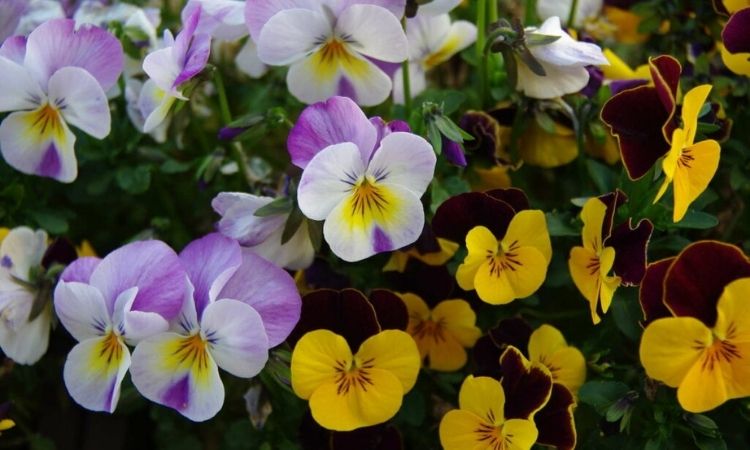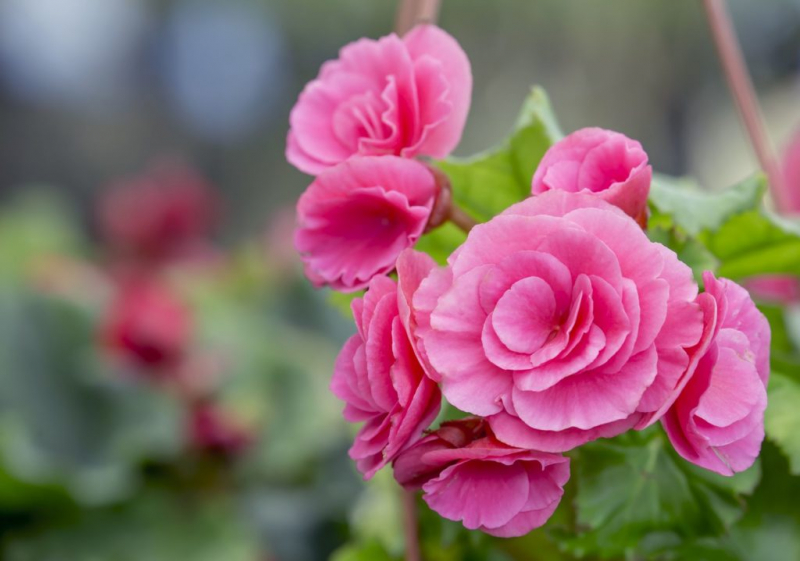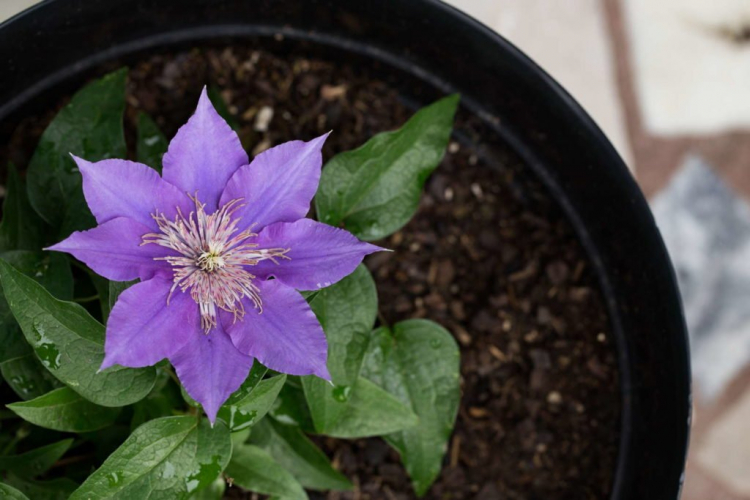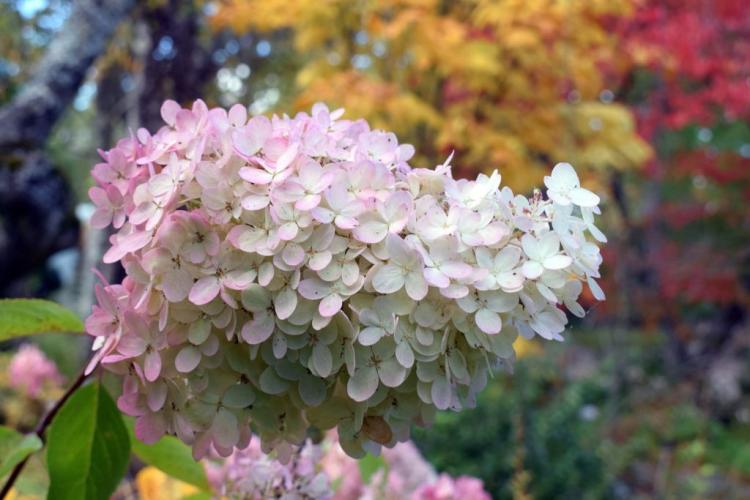Horned Violet: Expert Tips Planting And Caring For Viola Cornuta
Horned violet can be bought in autumn and spring. How to care for them and what to consider when growing horned violet, you can learn here. Horned violet (Viola cornuta) owes its name to a small horn perched on the end of its flower. These flowers, with their incredible variety of colors, you can also admire in your own garden from April. Planted in the right location and with a little care, you can even elicit a second bloom from your horned garden inhabitants.
Planting Horned Violet In The Garden
Table of Contents
| Category: | Perennial |
| Available Colors: | Flowers in shades of blue, purple, orange, yellow, white, and bicolor |
| Bloom Time: | Spring to summer |
| Height Range: | 4-8″ (10-20cm) |
| Space Range: | 6-9″ (15-23cm) |
| Lowest Temperature: | -30° to -20°F (-34° to -29°C) |
| Plant Light: | Sun to Part Shade |
| Companion Plants: | Garden Mum, Snapdragon, Alyssum |
| USDA Zone: | 4-9 |
You certainly have leeway when planting horned violet. The plants can be put in the ground from March to October. However, it is recommended that you do not plant them while they are in bloom. This can overstress the plants. Horned violet looks best when planted in large groups.
Then a giant color palette of flower variety can be enjoyed. The many seedlings that will show up over time around your planted out horn violet can be transplanted throughout the year. Only care should be taken to ensure frost-free soil.
Location For Horned Violet
Horned violet is originally found in the Pyrenees on rocky outcrops and alpine mats at altitudes up to 2500 meters. In order for the plants to feel comfortable, you should choose a semi-shaded location and avoid fully sunny places. The soil should be rich in humus, loose and permeable, so that waterlogging does not form. In the bed, humus-rich garden soil is sufficient. If the soil is too heavy, sand is mixed in. For long-term nutrient supply, garden compost and horn meal can be incorporated. In this case, a neutral to acidic soil pH guarantees the ideal absorption of nutrients.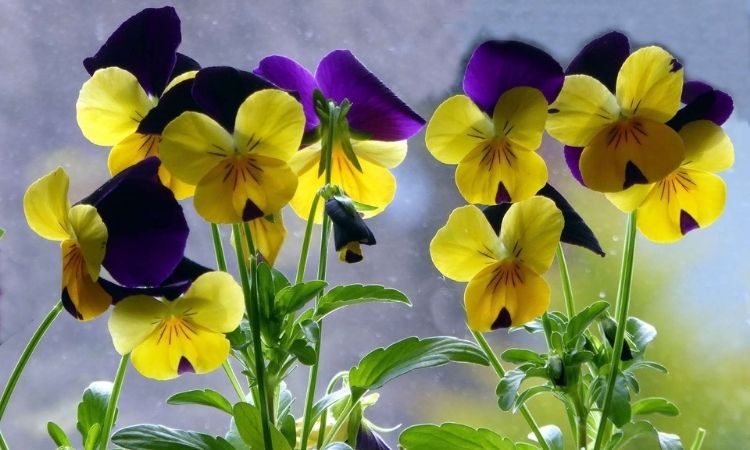
Planting Horned Violet Correctly In Containers And Beds
Due to their origin, the plants are ideal for rock gardens as well as perennial beds. Since horned violet thrives in a partial shade location, they also make great underplanting for trees or potted tall stems. In pretty planters such as clay pots, tubs, or bowls, horned violet can whitewash not only the garden but also the house in your favorite colors.
Here you need to pay attention to good water drainage. But if you choose the right location, nothing will stand in the way of horned violet in your own garden. Whether tub or bed – simply proceed as follows when planting:
- Bed: rake soil thoroughly and remove weeds and stones.
- Pot: drainage layer of clay shards, perlite, or gravel; fill with suitable soil
- Planting hole: twice the size of the root ball
- Planting distance: 60 inches.
- Loosen the root ball slightly with your hands.
- Plant the violet and tamp down the soil.
- Water well; watering water with liquid fertilizer
- When planting in a bed, a layer of gravel or grit can also be placed on the bottom of the planting hole if there is a risk of waterlogging.
Socialization
Horned violet is suitable as a floral replacement for early bloomers such as Crocus, Narcissus, or Primrose (Primula). For a varied flowering experience in summer, they can be combined with Aster or Zinnia. For the second partnership in autumn can be used Chrysanthemum or Dahlia.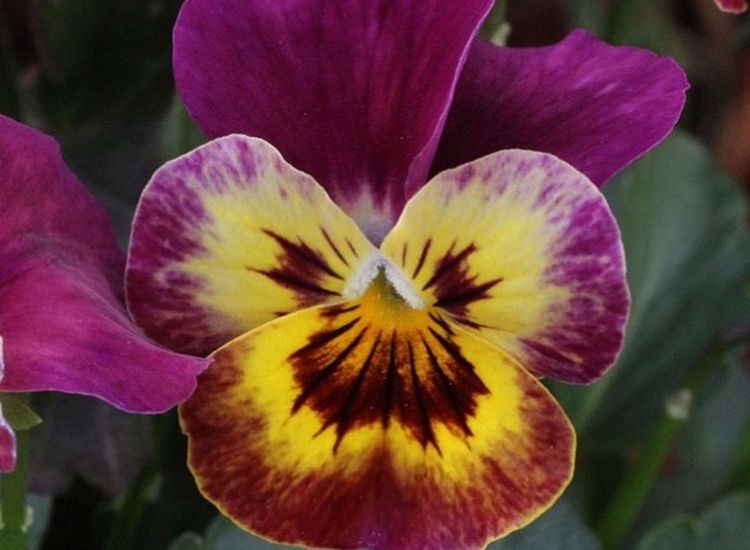
Propagate Horned Violet Yourself Or Buy Them
Horned violet is perennial, herbaceous plants that impress with a long flowering period. If your horned violet feels really comfortable, they tend to run wild. They seed themselves, form runners, and take over your bed piece by piece with their flowers. If you don’t want to let nature have its way with propagation, or if you want to spice up your garden with new varieties, you can harvest the fruit capsules, propagate them via cuttings, or buy seeds and seedlings in stores.
If you grow horned violet from seed, the plants are less persistent in terms of flowering time. However, adult seedlings do not lose flowering vigor. As a rule, they have more flowers than the plants propagated by cuttings or cracklings. If you prefer a long flowering period, you should therefore propagate your horned violet vegetatively or buy seedlings in stores.
If you prefer many flowers, the plants are propagated generatively by seed. The only decision that remains is whether to use your own plants as the starting point for the new generation of horned violet or to buy seeds and plants. Purchased seeds and seedlings save labor and time, and if you propagate them yourself, the money saved can go to the vacation fund.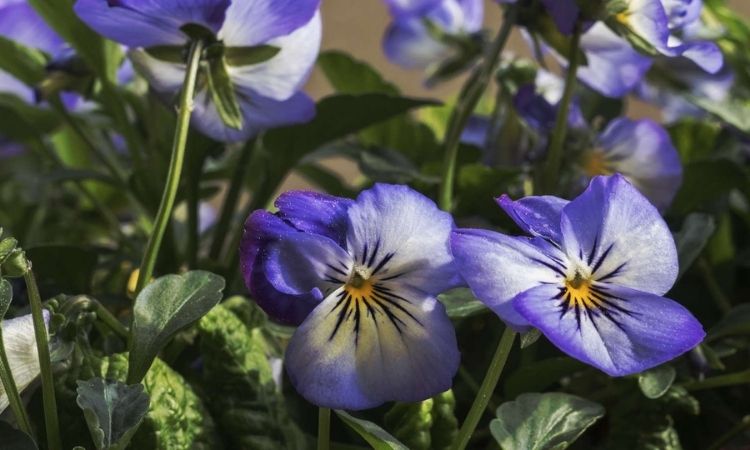
Buying Horned Violet: What To Look For
In the spring horned violet are available in specialized stores. The young plants are grown from cuttings. After the purchase, the plants are planted directly. It is important to note whether the plants come from the greenhouse. Then the young plants are not accustomed to frost. If planted before mid-May, a night visit from Father Frost is still possible.
Therefore, the plants should be acclimated to colder temperatures before planting, or you can buy plants that have been grown in a cold house. In addition, Greenpeace recommends that you buy the young plants in specialized stores. In 2014, pesticides harmful to bees were found on many flowers and ornamental plants from DIY stores or supermarkets, and precisely on horned violet.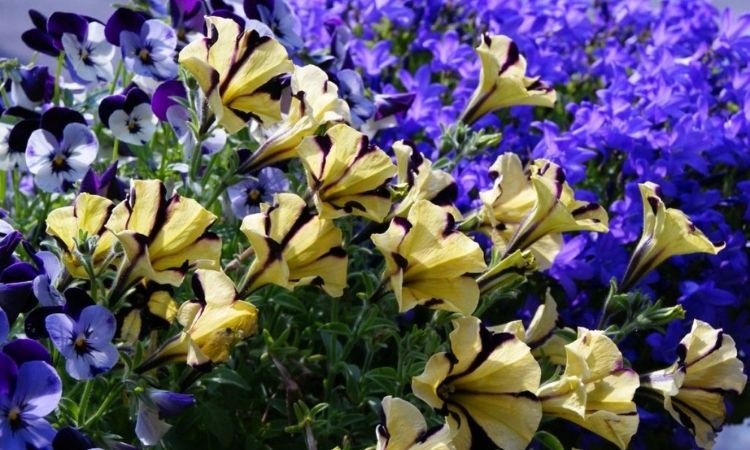
Propagate Horned Violet From Seed Yourself
When propagating from seed, you can either use seeds from the trade or harvest the seeds yourself from adult horned violet. Seeds available in stores are guaranteed true to variety. When harvesting your own, this is very difficult to achieve due to the cross-friendliness of the varieties. In addition, horned violet is cold germinators.
Therefore, self-harvested seeds should be sown immediately after harvest in late summer, as they need the cold temperature period of winter. Only in this way the seeds germinate well and evenly. The commercially available seeds are artificially cold-treated and can also be sown in January and grown-up indoors. The procedure for sowing horned violet is as follows:
- January – March: Sowing the seeds.
- Fill open sowing tray with sowing soil
- Sow seeds on soil, press down only lightly (light germination!)
- Location: shady and protected
- Keep evenly moist
- Germination temperature: 59 – 64 °F
- Germination time: 8 days – 4 weeks
- Keep dark until germination, then put in a brighter place
- Transplant into small pots when the first leaves are visible.
- May: Planting out
The self-harvested seeds rest outside over the winter and are otherwise treated as listed above. In the spring, the first leaves are formed and the plantlets can be pricked out. You can also sow horned violet directly into the bed until the end of September. If the seeds are sown directly into the bed, a distance of 20 cm between the seeds should be maintained.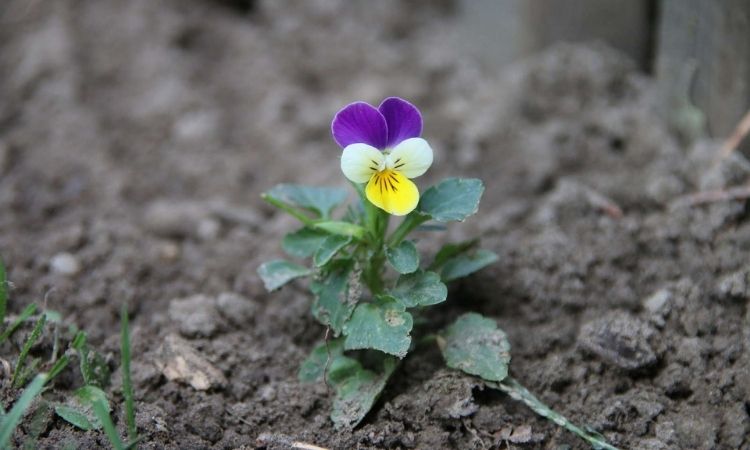
Summary: Propagate horned violet yourself or buy them.
- Advantage seeds: more flowers, cheaper
- Advantage young plant: more persistent flowering, less time and space required.
- Purchased seeds: artificially cold-treated; sowing: January – March.
- Self-harvested seeds: Cold germinator; sowing: late summer
Caring For Horned Violet
Horned violet, at 20 to 30 inches tall, is more dainty and smaller compared to pansies, their relatives. Nevertheless, they are more durable and bloom longer. With proper care, the length of the flowering phase can even be maximized. Regular cleaning out of wilted inflorescences prolongs the flowering phase because the plant does not put energy into seed formation.
Once the flowering phase is over, pruning supports the second flowering of your horned violet in autumn and bushy growth. This is done by cutting the plant back in half. So you do not only your plant something good, but give your eyes longer pleasure in the flowering. After the last bloom in October, the plants are cut to just above the ground in preparation for winter.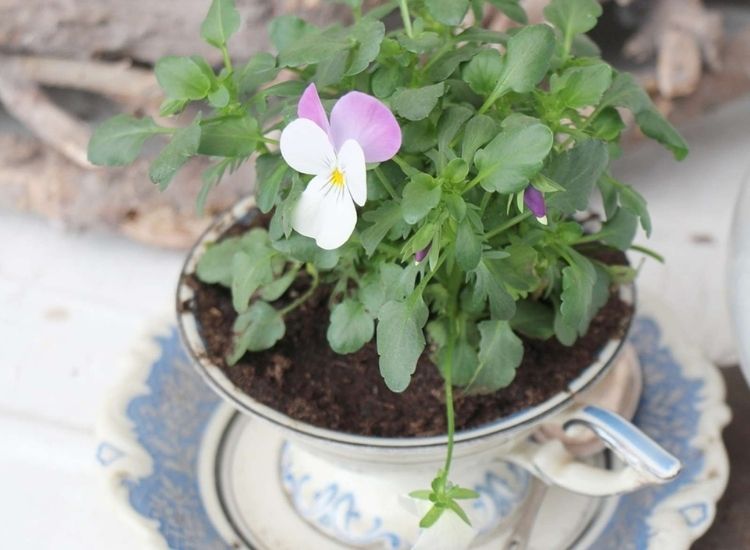
Watering Horned Violet
Horned violet-like it was moist. Waterlogging, on the other hand, is not tolerated at all. With potted plants, even a root ball that is too dense can mean that the plant does not get enough room to breathe. During flowering, the plants have a lot to do and therefore also increased water consumption. During the winter months, when the metabolism shuts down, watering is discontinued. Only plants standing under a roof are watered lightly even in winter.
Horn Violet At Frost
Horned violet originally comes from windy heights of up to 15.5 ml altitudes. There, the short to biennial plants have to perform well in winter. Most varieties can withstand temperatures as low as -59°F without any problems. Only the flowering stops at frosty minus temperatures. The varieties of the ‘Ice Babies’ series are particularly robust. How to play it safe and protect your plants from freezing temperatures, you can read in our article on horned violet in frost.
